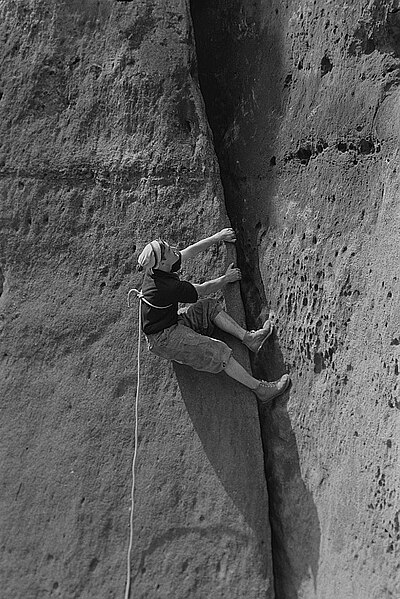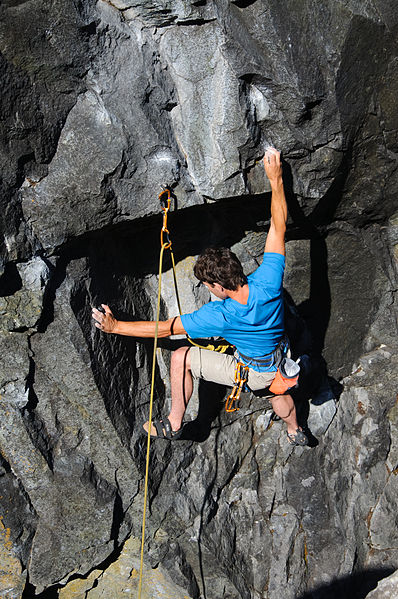Lead climbing is a technique in rock climbing where the lead climber clips their rope to the climbing protection as they ascend a pitch of the climbing route, while their second remains at the base of the route belaying the rope to protect the lead climber in the event that they fall. The term is used to distinguish between the two roles, and the greater effort and increased risk, of the role of the lead climber.
Leader (top) belayed by the second (below)
Leader (top) belaying the second (below)
Lead climber falling with a modest runout; the belayer is not visible but has clearly gripped the rope.
Janja Garnbret in the 2018 IFSC Climbing World Championships
Rock climbing is a sport in which participants climb up, across, or down natural rock formations or indoor climbing walls. The goal is to reach the summit of a formation or the endpoint of a usually pre-defined route without falling. Rock climbing is a physically and mentally demanding sport, one that often tests a climber's strength, endurance, agility and balance along with mental control. Knowledge of proper climbing techniques and the use of specialized climbing equipment is crucial for the safe completion of routes.
A rock climber approaches a roof while leading a multi-pitch, traditional route in Custer State Park, United States.
Climbing in Germany, circa 1965.
Man sport climbing under overhang
Bouldering in Joshua Tree National Park, United States








